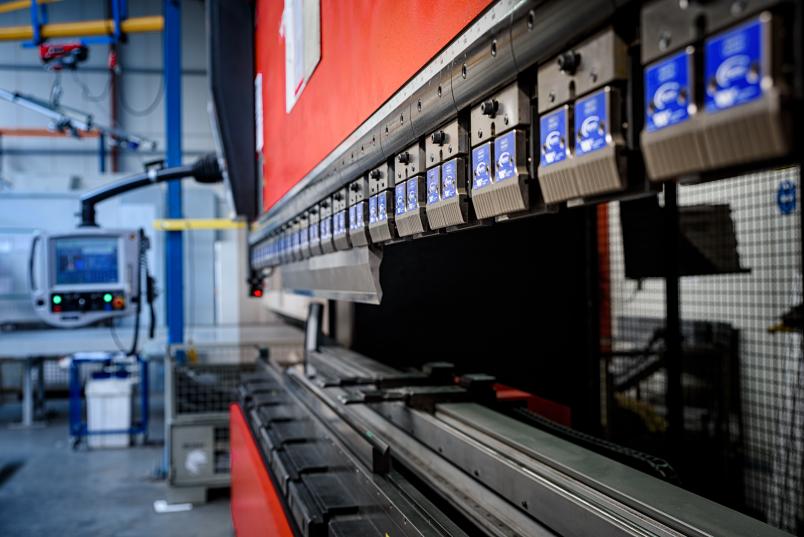
Mechanical engineering
No need to be afraid of AI in sales
Since the advent of digitalisation, sales is no longer what it used to be. But that doesn’t mean that everyday work routine can’t get better as a result.
Many small and medium-sized enterprises are seeing their world shaken up by digitalisation. Especially sales, i.e. the interface between the company and the market, is changing a lot. “The traditional task of salespeople is to determine a customer’s needs or to work out the best solution to a problem together with the customer, to explain products and to convince the customer to buy,” explains Dr. Christian Ahlfeld from the Chair for Industrial Sales and Service Engineering (ISSE) at RUB. Traditionally, a company’s sales staff and the customer’s staff often had a long-standing and close relationship.
Customer demands escalate
Times have changed, however. Digitalisation affects the shopping behaviour of customers. The internet makes research possible without contacting the supplier. At the same time, everything is supposed to be more efficient, faster, leaner, and the purchase process is supposed to be quicker. “We refer to this phenomenon as escalating customer demands,” says Christian Ahlfeld. “Most importantly, the digital transformation is creating completely new requirements for sales at the interface to the customer: the possibilities to compare offers increase the customer’s expectations not only of the product or service, but also of the relationship.”
The relationship between supplier and customer is changing, because the customer now determines when and in what form the sales department is involved in their value creation. Often, in-person contact only occurs after the customer already made their purchase decision based on their own research. The restrictions during the coronavirus pandemic have intensified this effect. During this time, it wasn’t possible to visit customers in person, which means that the interaction with each other also changed as a result.
In addition, digital platforms open up opportunities for new providers, including international ones, to enter the market with unconventional business models. In the case of highly standardised products in particular, they pose serious competition for established companies. “As a result, small and medium-sized enterprises feel under pressure to act,” says Marleen Voß from the ISSE team. “You could say they feel threatened.” The PASS project, short for Predictive Analytics Systems in Sales, aims to address this pressure to act. The goal is to view digitalisation as a strategic resource. “Digital technology can help to achieve competitive advantages in the market,” stresses Marleen Voß.
Together with several partner companies in the sector of mechanical engineering manufacturing, the PASS project team is exploring how and where artificial intelligence (AI) can be used as a useful tool in sales. “Basically, it’s about extracting and channelling knowledge from existing, mostly unstructured data that helps in everyday life,” explains Christian Ahlfeld. Together with their industrial partners, the researchers are developing a modular predictive analytics system as a software-as-a-service platform that enables companies to use the system flexibly depending on the decision-making object in the respective situation and, first and foremost, independently of existing digital infrastructures. “In principle, enterprises have been aware of the need for such changes and the range of possibilities,” says Marleen Voß. “But most of them weren’t able to answer the question of how to implement such a solution in their own company in concrete terms.”
One of the strengths of AI is that it can analyse more data than a human could ever manage. This can pay off, for example, when it comes to making sales forecasts that are used as a basis for a company to buy parts for products. So far, such estimates have been based on the experience of employees in sales. However, in case of fluctuations in sales, this often led to high costs for the purchase of unnecessary parts and their storage. An AI can provide a realistic basis for such estimates by systematically evaluating the data of many past years.
“You may also like”
Cross-selling and up-selling is another instance that the researchers are addressing: it’s about recognising what else might be interesting for a customer in addition to the product they purchased from the company. “In principle, this is exactly what we’re familiar with from purchases in online shops. Under the product we’ve chosen, another one is often displayed with the caption ‘You may also like’ or ‘Customers who bought this item also bought’,” elaborates Christian Ahlfeld. In order to make such recommendations, an AI can use not only the company’s own data, but also third-party data, for example by analysing keywords on the homepages of relevant companies. This is how potential new customers can be located without a huge amount of effort. The AI can even suggest an order in which these potential customers should be contacted, based on the probability of closing a deal. To this end, the system incorporates data such as the companies’ profit and turnover.

The AI solutions used in the project were tailored to the specific requirements of the partner companies. “The fundamental logic underlying such AI is available on the market, but the training and matching of the AI to the specific requirements is done on an individual basis,” explains Marleen Voß. She’s particularly interested in how the systems fit meaningfully into the organisation of a company and how they affect the daily routine of its employees. “Many employees of our project partners take a positive view of the technical potential. This is certainly also a result of the respective corporate culture,” says Marleen Voß. Scepticism often results from the fear that not only their own work performance, but also their own job could become obsolete due to the introduction of artificial intelligence.
Still, the project team has found that it helps to involve employees in the plans for AI implementation right from the start, to listen to their concerns, wishes and fears, to ask whether the solution is the right fit, to ensure safety through workshops and training, and to provide contact persons to answer questions. “When the Aha! effect kicks in, namely that the AI can relieve them of tedious work such as maintaining address directories or poring over exhibitor catalogues, most employees will be convinced of the benefits of AI,” says Christian Ahlfeld. It frees up time that can be invested in other tasks, such as marketing activities. “AI isn’t a substitute for human activities – rather, it enhances them,” concludes Marleen Voß. “You can make better decisions. But it is ultimately still humans who make the decisions, and the question of the future role of humans in an AI-supported workplace can’t be fully answered, at least not at present.”